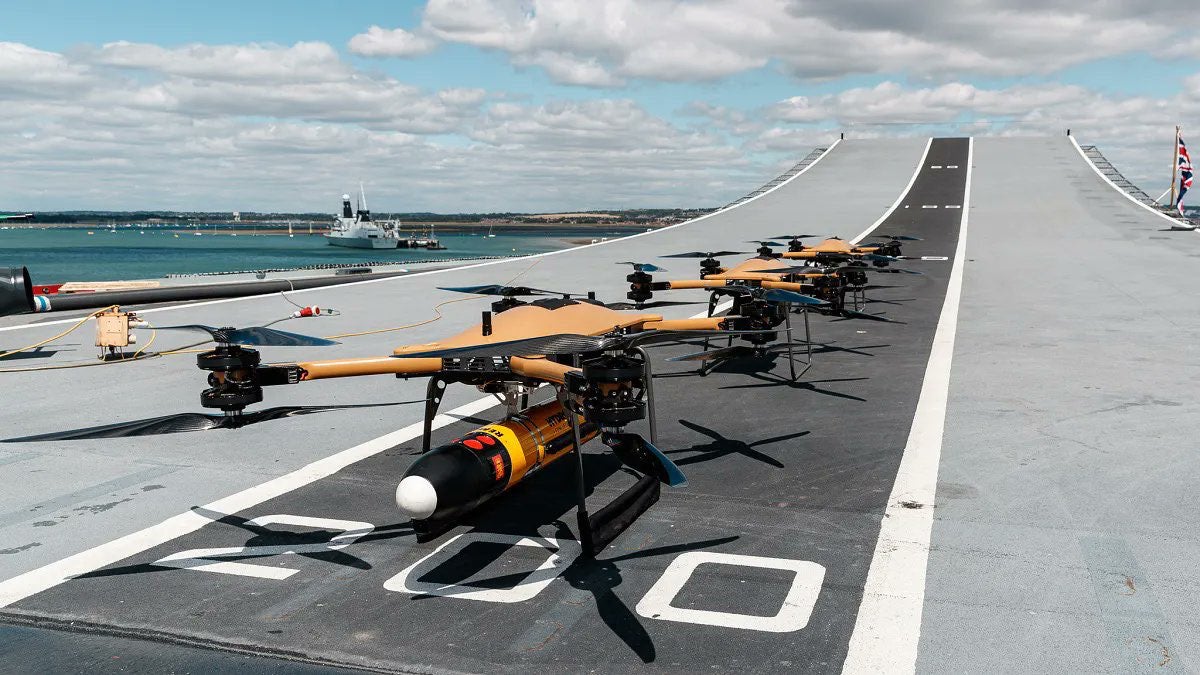
Malloy Aeronautics unveiled its T650 Sting Ray, an uncrewed, battery-powered quadcopter air system weighing just under 300kgs, at DSEI. The vehicle can carry a payload equivalent to its own weight and reach around 140km/h. Its open architecture design allows the integration of most third-party equipment.
In the last two years, the T650 team has worked with Royal Marines on delivering supplies from ship to shore in the UK, the US, Cyprus and even in the Arctic Circle.
UK-based Malloy Aeronautics has 12 years of electric aircraft experience and will collaborate with BAE Systems to support the company in meeting its sustainability and multi-domain integration goals.
Presenting the T650 Sting Ray at DSEI 2021, Malloy Aeronautics chief executive officer Oriol Badia said: “Our vision is that our vehicles will become the workhorse for delivering humanitarian aid equipment, and even people or any obstacles autonomously.
“We build logistics platforms, but we also build a testbed for new technologies, and we will keep on pushing the boundaries of all-electric aircraft, with the presentation of these new concepts.”
To satisfy the current requirements of navies, and to be able to stay within affordability, the Sting Ray’s battery allows for up to 30km range, depending on the payload size.
How well do you really know your competitors?
Access the most comprehensive Company Profiles on the market, powered by GlobalData. Save hours of research. Gain competitive edge.

Thank you!
Your download email will arrive shortly
Not ready to buy yet? Download a free sample
We are confident about the unique quality of our Company Profiles. However, we want you to make the most beneficial decision for your business, so we offer a free sample that you can download by submitting the below form
By GlobalDataBadia said: “Another thing we’ve done this year is for the first time ever, we’ve tested a new capability that will help save lives at sea by delivering a live rock, pulling from the ship. So, there is a clear need for airborne capabilities, and both in the land of maritime environments.”
Malloy claims the T650’s capabilities will open up a wide range of options for users, including anti-submarine warfare and last-minute supply.
According to BAE Systems, its hybrid vehicles have carried out 12,000 postings, saving approximately 25m gallons of heavy oil that older systems would have consumed.
Malloy says the initial trigger for starting to experiment with aircraft came from the need to replace helicopters doing cattle herding in Australia to reduce accident rates and create a more affordable option.
“We moved into logistics later on, based on discussions with the US Army, which at the time we’re looking also for safer and lower cost options to resupply troops in dangerous environments,” said Badia.
The companies carry out assembly, design and testing in the UK to control the quality supply chain and agility.
BAE Systems advanced projects, technology and manufacturing director Dave Holmes said “Malloy are experts in rotary capabilities and working together with small-medium size companies is vital. So, Malloy was a clear choice.”
The companies say T650 uses the highest capability of lightweight batteries, and every part is produced in the UK. Malloy and BAE Systems say producing batteries with larger ranges would be possible, but that would add weight to the vehicle and may risk crossing over the boundaries of affordability.
Holmes explained that each company protects and owns its capabilities, rather than co-own the whole of T650. The companies are planning to scale up production of the Sting Ray for both commercial and defence use.
Testbed flights of Sting Ray are due to take place towards the end of 2022 and it will be available to customers in 2023.






